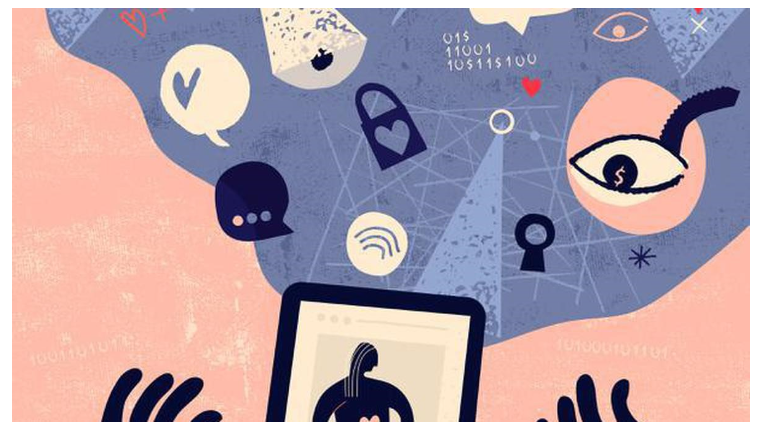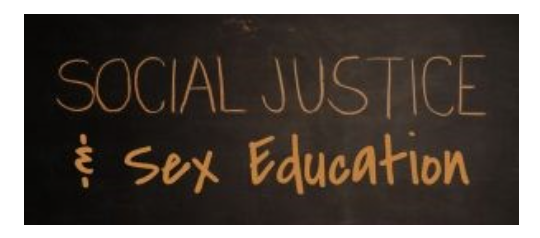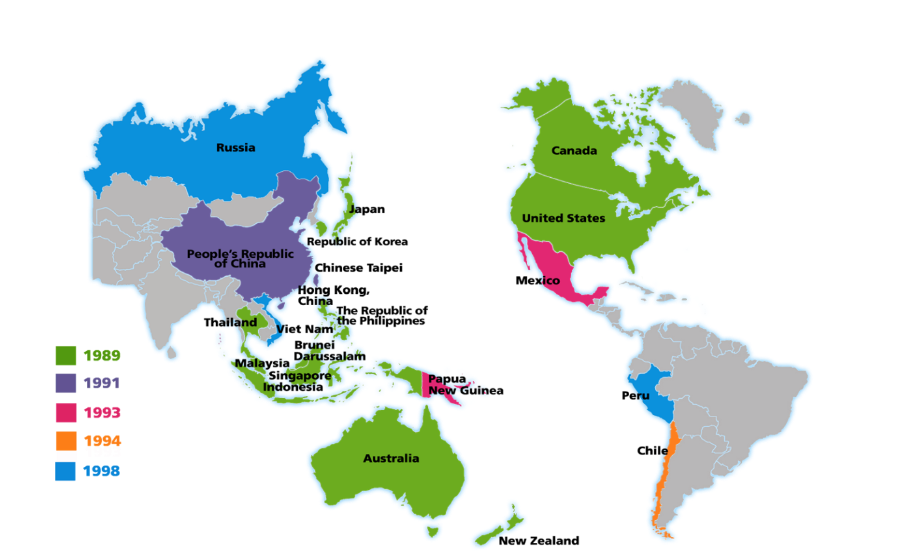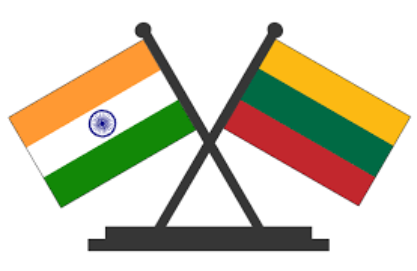Friday, 1st December 2023
Deciphering Simultaneous Elections
In News: The Union Government established a six-member panel to review and suggest recommendations for conducting synchronized elections in the country.
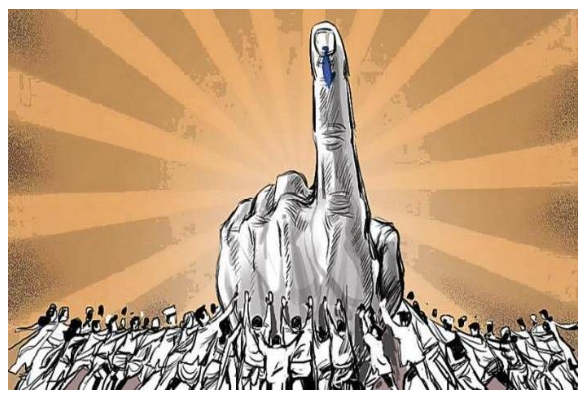
Simultaneous Elections in India: A Conceptual Overview
- Definition
- Simultaneous Elections propose a synchronized electoral calendar for both the Lok Sabha and State Assemblies in India.
- The aim is to conduct elections for both entities within a specified timeframe.
- Historical Context
- While this electoral approach was in practice until 1967, it gradually lost its consistency due to frequent premature dissolutions of Assemblies and Lok Sabhas.
- Presently, only a handful of states, including Andhra Pradesh, Arunachal Pradesh, Odisha, and Sikkim, align their elections with the Lok Sabha polls.
- Advantages
- As outlined in the Law Commission of India's draft report from August 2018, Simultaneous Elections offer several benefits.
- These include cost savings for the public, reduced strain on administrative and security resources, timely implementation of government policies, and a shift in administrative focus towards developmental activities instead of electioneering.
Challenges in Holding Simultaneous Elections in India: A Brief Overview
- Feasibility Concerns
- Constitutional provisions outlining the tenure of the Lok Sabha and State Assemblies pose challenges for the feasibility of One Nation One Election (ONOE).
- The collapse of a government mid-tenure and the need for extensive constitutional amendments present significant hurdles.
- Federalism and Conceptual Misalignment
- ONOE contradicts the federal structure of India, defined as a "Union of States."
- This misalignment challenges the core concept of federalism, raising questions about the suitability of a unified electoral approach for the diverse states.
- Current Electoral System's Benefits
- The existing system of periodic elections allows voters to express their preferences more frequently.
- This setup maintains accountability by preventing the blending of issues between national and state polls, ensuring distinct representation.
- Logistical and Financial Implications
- Implementing simultaneous elections requires a substantial budget, with an estimated Rs 9,284.15 crore for procuring Electronic Voting Machines (EVMs) and Voter-Verified Paper Audit Trail (VVPAT) machines.
- Impact on Voter Behaviour
- Concerns arise about the potential influence on voter behaviour, where national issues might overshadow state-specific concerns.
- This could lead to the dominance of larger national parties, potentially marginalizing regional parties in the electoral landscape.
- Divergent Election Issues
- State and national elections traditionally revolve around distinct sets of issues.
- Simultaneous elections may force voters to prioritize one set over the other, impacting the democratic process by potentially overlooking critical state-centric matters.
- Diminished Accountability and Economic Impact
- Frequent elections, as per the current system, enhance the accountability of politicians by ensuring they face the electorate regularly.
- Additionally, the election process generates employment opportunities, contributing to economic growth at the grassroots level.
Moving Forward
- Frequent elections occurring at various intervals disrupt developmental initiatives.
- Thus, a comprehensive examination and discussion of the concept are essential to mitigate the impact of the model code of conduct on ongoing development projects.
- Achieving a consensus on the necessity of implementing the "One Nation, One Poll" model is imperative.
- All political parties should actively engage in deliberations on this matter. Initiating a public debate will allow for the inclusion of public opinion.
- As a mature democracy, India can then adopt the outcome of this debate to shape the way forward.
Source: TH
The Broadcasting Services (Regulation) Bill
In News: The Broadcasting Services (Regulation) Bill should seize the chance to safeguard both press freedom and diversity.
Key Features of the Draft Broadcasting Regulation Bill, 2023
- Addressing a prolonged need, the bill consolidates and modernizes regulatory provisions for diverse broadcasting services.
- It expands its scope to encompass emerging formats like over-the-top (OTT) content and digital news, currently regulated through the IT Act, 2000.
- To match the pace of technological evolution, the bill introduces comprehensive definitions for contemporary broadcasting terms.
- It also integrates provisions to accommodate emerging broadcasting technologies.
- The bill strengthens self-regulation by introducing 'Content Evaluation Committees' and reconfiguring the existing Inter-Departmental Committee into a more inclusive 'Broadcast Advisory Council.'
- Allowing a flexible approach, the bill permits differentiation in Programme and Advertisement Codes across various services.
- Broadcasters are required to self-classify content, and stringent access control measures are mandated for restricted content.
- Recognizing specific needs, the bill includes provisions enabling the issuance of comprehensive accessibility guidelines.
- Introducing statutory penalties such as advisory, warning, censure, or monetary penalties for operators and broadcasters, the bill maintains provisions for imprisonment and/or fines exclusively for severe offenses.
- Provisions encompass infrastructure sharing among broadcasting network operators, carriage of platform services, and an optimized Right of Way section designed for efficient handling of relocations and alterations.
- The bill also establishes a structured dispute resolution mechanism.
Arguments in Favor of the Broadcasting Regulation Bill
- The bill signifies a shift from the outdated Cable Television Networks Regulation Act of 1995.
- It is hailed as a crucial legislation for modernizing the regulatory framework, adapting to the dynamic landscape of OTT, digital media, DTH, IPTV, and emerging technologies.
- The bill introduces provisions empowering broadcasters with self-regulation mechanisms.
- It seeks to strike a balance between regulatory oversight and industry autonomy.
- By allowing a differentiated approach to Programme and Advertisement Codes, the bill tailors regulations to suit the nature of linear and on-demand content.
- This flexibility enhances relevance for content creators across various services.
- Monetary penalties are linked to the financial capacity of the entity, ensuring fairness.
- Penalties are proportionally determined based on the entity's investment and turnover, preventing disproportionate burdens on smaller entities.
- The bill provides comprehensive accessibility guidelines for the Divyangjan community, addressing specific needs and promoting inclusivity.
- The bill emphasizes stakeholder involvement through public consultation.
- The industry welcomes the government's initiative for a unified law, anticipating streamlined compliance and enforcement processes.
Arguments Against the Bill
- The bill raises apprehensions about whether its primary focus is on public service or increasing government control and regulation.
- There are worries that it may lead to heightened government influence over digital infrastructure and citizens' viewing choices.
- provisions in the draft, particularly point 36, are criticized for their broad and ambiguous language, granting authorities the power to prohibit content.
- Questions arise about the influence of "authorized officers" working under government direction.
- Concerns are voiced that the bill might contribute to the erasure or selective representation of Indian minority communities.
- The vague language in the draft raises fears of promoting a universal majority identity.
- Despite the initial aim of the Cable Television Networks (Regulation) Act, 1995, to curb illegal cable operators, the new bill is criticized for not addressing existing loopholes, conflicts of interest, and opaque practices within the Indian media industry.
- The bill faces scepticism due to the government's recent history with media regulation, marked by unfulfilled promises and questionable outcomes.
- Parallels are drawn with the controversial IT Rules, 2021, introduced for national welfare.
- Amid debates on "cultural invasion" and "anti-national" programming, the perceived nexus between government officials and media houses raises concerns about promoting oligopolistic media ownership tendencies.
Charting the Course for Effective Broadcasting Regulation in India
- Develop a contemporary legislative framework covering all facets of broadcasting, fostering competition, and preventing media ownership concentration.
- Prioritize inclusive stakeholder engagement involving industry experts, content creators, broadcasters, and the public to inform regulatory decisions.
- Design regulations that can adapt to technological advancements, acknowledging the dynamic nature of the media landscape.
- Implement a robust content classification and rating system to empower viewers with informed choices and regulate content effectively.
- Establish an independent regulatory body, ensuring transparency, impartiality, and accountability in all regulatory decisions.
- Recognize the diversity of broadcasting platforms and adopt a differentiated regulatory approach for traditional TV, OTT, and digital media.
- Study and integrate global best practices, drawing lessons from other countries' experiences, while considering India's unique cultural and social context.
Source: TH
Loss and Damage Fund - Edukemy Current Affairs
In News: On the initial day of COP 28, member nations agreed to activate a Loss and Damage (L&D) fund to compensate countries grappling with the impacts of climate change.
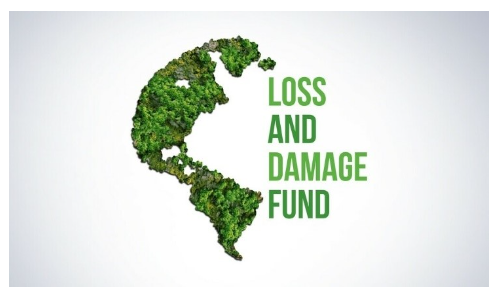
Loss and Damage Fund Overview:
The Loss and Damage (L&D) fund is a financial mechanism addressing irreversible consequences of climate change, compensating for real losses beyond monetary value, affecting human rights, well-being, and environmental sustainability.
- Genesis and Evolution
- Historical Accountability (30+ years)
- Persistent call for affluent nations to recognize their role in historic pollution, causing significant global damage.
- COP 19 (2013)
- Formal agreement leading to the establishment of the L&D fund, offering financial and technical assistance to economically developing nations facing climate-induced Loss and Damage.
- Historical Accountability (30+ years)
- Subsequent Developments
- COP 25 -Santiago Network for L&D created, but no financial commitments.
- COP 26 (2021)-Continued discussions on the fund's operationalization.
- COP 27 (Nov 2022)-Agreement to set up the L&D fund and establishment of Transitional Committee (TC) for new funding mechanisms.
- Challenges at TC4 and TC5
- TC4 Meeting-No consensus on fund operationalization; key points of contention include fund hosting, common but differentiated responsibilities (CBDR), climate reparations, and fund eligibility for all developing nations.
- TC5 Meeting-Drafted recommendations forwarded to COP 28, addressing unresolved issues.
Challenges Regarding the Loss and Damage Fund
- Developed Nations' Reluctance
- Developed nations, notably the US, show hesitancy in committing as primary donors to the fund.
- Voluntary support raises concerns about the sincerity of fulfilling the fund's objectives, impacting global climate cooperation.
- Uncertainty Surrounding the Fund
- Lack of clarity on the fund's size, with attempts to specify it facing resistance from the U.K. and Australia.
- Current draft urges developed nations to contribute without providing a clear commitment or framework.
- Diplomatic Breakdown and Global Consequences
- Developing nations feel their concerns are inadequately addressed, leading to discontent and complicating climate action.
- Threatens climate justice and exacerbates suffering in vulnerable communities, impacting global cooperation on various issues.
- Security Implications of Climate Change
- Climate-change-induced instability poses security threats, with conflicts in vulnerable nations having the potential to spill across borders.
- Absence of support for vulnerable communities can result in humanitarian crises, including food shortages, displacement, and conflicts.
Way Forward
- Global Commitment
- Encourage developed nations to play an active role as primary donors in the Loss and Damage (L&D) fund, demonstrating a robust financial commitment.
- Transparency and Structure
- Advocate for transparent discussions to define the fund's size, operational guidelines, and allocation mechanisms, ensuring clarity and fostering accountability.
- Inclusive Diplomacy
- Promote open diplomatic dialogues addressing the concerns of developing nations, fostering collaboration for effective climate action and resolution of global issues.
- Security Mitigation
- Proactively address security implications of climate-induced instability, implementing measures to tackle humanitarian crises and provide support to vulnerable communities.
|
UPSC Previous Year Questions Mains (2021) Q. Explain the purpose of the Green Grid Initiative launched at World Leaders Summit of the COP26 UN Climate Change Conference in Glasgow in November, 2021. When was this idea first floated in the International Solar Alliance (ISA)? Q. Describe the major outcomes of the 26th session of the Conference of the Parties (COP) to the United Nations Framework Convention on Climate Change (UNFCCC). What are the commitments made by India in this conference? |
Source: TH
Nagarjuna Sagar Project - Edukemy Current Affairs
In News: Tension escalated at the Nagarjuna Sagar Project site in Nalgonda district when the Andhra Pradesh police assumed control of fifty percent of the project's spillway area.
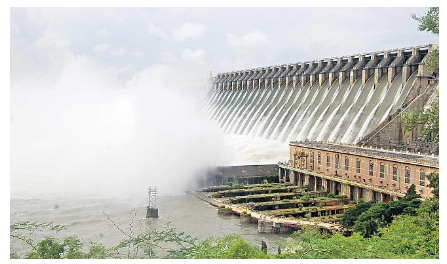
About Nagarjuna Sagar Project
- The Nagarjuna Sagar Dam, situated across the Krishna River at Nagarjuna Sagar on the border between Palnadu district in Andhra Pradesh and Nalgonda district in Telangana, is a significant masonry dam.
- Constructed between 1955 and 1967, the dam serves multiple purposes, providing irrigation water to districts such as Palnadu, Guntur, Nalgonda, Prakasam, Khammam, Krishna, and parts of West Godavari.
- Additionally, it contributes to electricity generation for the national grid.
- With a gross storage capacity of 11.472 billion cubic meters and an effective capacity of 6.92 cubic km or 244.41 Tmcft, the dam stands 124 meters tall from its deepest foundation.
- Stretching over 1.6 kilometres, the dam features 26 floodgates, each 13 meters wide and 14 meters tall.
- The collaborative operation of the dam involves both Andhra Pradesh and Telangana.
- The Nagarjuna Sagar Dam holds historical significance as one of the initial "modern temples" infrastructure projects, marking the onset of the Green Revolution in India.
- Furthermore, it stands as one of the earliest multi-purpose irrigation and hydroelectric projects in the country.
Source: TH
Indira Canteens - Edukemy Current Affairs
In News: The Chief Minister of Karnataka announced plans to inaugurate 188 more subsidized canteens in 2023, providing affordable meals for the underprivileged.
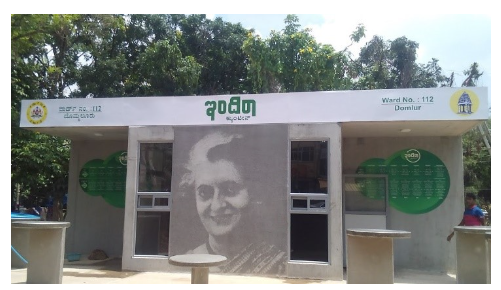
Indira Canteens: Providing Affordable Food to Urban Karnataka
- Indira Canteen is a food subsidisation program launched by the Government of Karnataka in 2017, inspired by the Amma Unavagam scheme of Tamil Nadu.
- Named after Indira Gandhi, the first and only female Prime Minister of India, the program aims to provide affordable and nutritious meals to the urban poor and unorganized sector workers in the state.
Key features of the program:
- Subsidized pricing: Breakfast is provided for ₹5, and lunch and dinner for ₹10.
- Variety of meals: The menu includes items like idli, sambar, chutney, rice, ragi mudde, tomato bath, and curd rice.
- Hygiene and quality control: Canteens are maintained with strict hygiene standards and undergo regular inspections.
- Accessibility: Canteens are located in strategic locations across urban areas, making them easily accessible to the target population.
Recent developments:
- In the 2023-24 state budget, the government allocated ₹100 crore to the program for expansion and improvement.
- The government plans to open 118 new canteens across the state, in addition to the existing ones.
- The menu is being diversified to include local varieties of food in different regions.
- Prices have been increased to ₹25 per meal in urban local bodies outside of Bengaluru, due to rising costs.
Impact on the beneficiaries:
- Indira Canteens have provided a lifeline to the poor by making nutritious food affordable and accessible.
- The program has helped in reducing hunger and malnutrition among the urban population.
- It has also provided economic relief to families struggling to make ends meet.
Challenges and future prospects:
- Ensuring financial sustainability of the program is a key challenge.
- Maintaining quality and hygiene standards across all canteens is crucial.
- Reaching out to the most vulnerable sections of the population requires constant effort.
Despite these challenges, Indira Canteens have emerged as a successful model for providing food security in urban areas. The program has the potential to be replicated in other states and countries to address the issue of hunger and malnutrition.
Source: TH
Exercise Milan 2023 - Edukemy Current Affairs
In News: Preparing for its largest naval exercise, the Navy gears up amidst oceanic engagements.
About Exercise Milan
- MILAN, a biennial multilateral naval exercise, was initiated by the Indian Navy in 1995 at the Andaman and Nicobar Command.
- The exercise began with the involvement of only four countries—Indonesia, Singapore, Sri Lanka, and Thailand—during its 1995 edition.
- Over the years, MILAN has experienced substantial growth both in terms of the number of participants and the complexity of exercises.
- Originally aligned with India's 'Look East Policy,' MILAN has evolved in subsequent editions to align with India's 'Act East Policy' and the Security and Growth for All in the Region (SAGAR) initiative.
- This evolution has led to the inclusion of participation from island nations in the Western Indian Ocean Region (IOR) and IOR littorals, showcasing the exercise's expanded regional engagement.
Source: TH
X-Ray Polarimeter Satellite - Edukemy Current Affairs
In News: The Indian Space Research Organisation (ISRO) declared that India is preparing to launch its inaugural X-Ray Polarimeter Satellite (XPoSat).
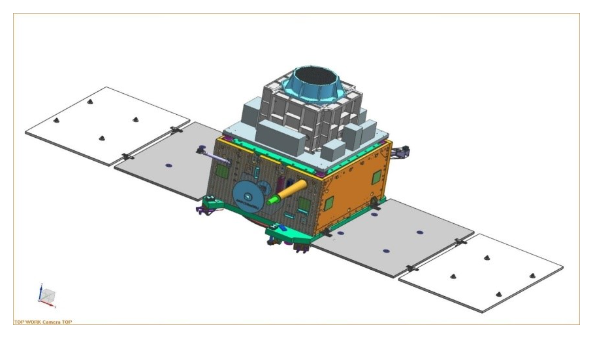
About X-Ray Polarimeter Satellite
XPoSat (X-ray Polarimeter Satellite) is India's inaugural dedicated polarimetry mission designed to investigate the dynamics of bright astronomical X-ray sources in extreme conditions. Positioned in a low Earth orbit, XPoSat carries two scientific payloads:
- POLIX (Polarimeter Instrument in X-rays)
- Developed by Ramam Research Institute (RRI) in collaboration with U R Rao Satellite Centre (URSC), POLIX measures polarimetry parameters, including the degree and angle of polarization.
- Operating in the 8-30 keV energy range, it utilizes a collimator, scatterer, and four X-ray proportional counter detectors to observe approximately 40 bright astronomical sources of various categories during the planned 5-year mission.
- XSPECT (X-ray Spectroscopy and Timing)
- XSPECT, onboard XPoSat, offers fast timing and high spectroscopic resolution in soft X-rays (0.8-15 keV).
- Equipped with Swept Charge Devices (SCDs) and passive collimators, XSPECT enables long-term monitoring of spectral state changes, line flux variations, and simultaneous temporal monitoring of soft X-ray emissions.
- It targets diverse sources such as X-ray pulsars, black hole binaries, low-magnetic field neutron stars, AGNs, and Magnetars.
These payloads contribute to understanding complex emission mechanisms from astronomical sources, enhancing researchers' ability to decode the nature of such emissions through polarimetric and spectroscopic measurements.
Source: TH
National Medical Commission (NMC)
In News: Concerns arise regarding the inclusion of a colour image of Dhanvantari and the word 'Bharat' in the National Medical Commission's logo.
About National Medical Commission (NMC)
- The National Medical Commission (NMC) is a statutory body established in accordance with the National Medical Commission Act of 2019, succeeding the previously instituted Medical Council of India (MCI) founded in 1934.
- The primary objectives of the NMC include:
- Enhancing access to quality and affordable medical education.
- Ensuring the availability of a sufficient number of high-quality medical professionals across all regions of the country.
- Promoting universal and equitable healthcare with a community health perspective, making medical services accessible to all citizens.
- Encouraging medical professionals to incorporate the latest medical research into their practices and contribute to ongoing research efforts.
- Periodically and transparently assessing medical institutions in an objective manner.
- Maintaining a comprehensive medical register for India.
- Upholding high ethical standards in all facets of medical services.
- Establishing an effective grievance redressal mechanism for addressing concerns within the medical field.
- Composition of NMC
- The National Medical Commission (NMC) comprises 25 members, with a majority nominated by the Central government.
- The tenure of NMC members is generally four years, except for part-time members who serve a two-year term.
- The commission includes 11 part-time members representing states or state medical councils. Importantly, the chairpersons and other members nominated by the Central government cannot be renominated.
- Decisions within the NMC mandate require the approval of the majority, specifically at least 13 out of the total 25 members.
Source: TH
The Border Security Force (BSF)
In News: There is no occurrence of "successful infiltration" along the Bangladesh border, stated by the Director-General of the Border Security Force.
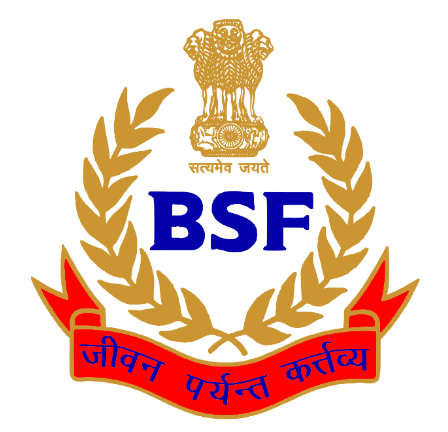
Formation and Mandate of the Border Security Force (BSF)
- The Border Security Force (BSF) was established on December 1, 1965, following the recommendations of a committee of secretaries post the 1965 Indo-Pak War.
- Initially formed to patrol the International Border with Pakistan, BSF is India's primary border guarding force responsible for securing international borders with Pakistan and Bangladesh.
Roles of BSF During Peace and Wartime
- During peacetime, BSF is tasked with preventing cross-border crimes, illegal entry or exit, smuggling, and ensuring the security of people in border areas.
- It also aids state and union territory administrations in law-and-order maintenance and anti-insurgency operations.
- In wartime, BSF defends crucial installations, safeguards prisoners of war, and maintains law and order in enemy areas under Army control.
BSF's Expanded Responsibilities
- Apart from its core duty of border protection, BSF has been actively involved in counter-terrorism, counter-insurgency operations in regions like Jammu & Kashmir, Northeastern states, and areas affected by Naxalism.
- The force is also deployed for various internal security tasks such as election security, VIP protection, and handling riots and crowds.
BSF's Role in Disaster Management
- BSF has a significant role in disaster management, with specialized battalions trained for such activities.
- In events like the Gujarat earthquake in 2001, BSF units were at the forefront of providing assistance to affected populations, showcasing their contribution to disaster response and relief efforts.
BSF's Participation in UN Peacekeeping Missions
- As a member of the United Nations, India actively contributes to UN peacekeeping missions.
- BSF personnel annually participate in these missions, representing India on the international stage and contributing to global peacekeeping initiatives.
Source: TH
Does the evolving global order exhibit bipolar characteristics?
In News: Global disruptions, from China's rise to superpower competition, Russia's challenges in Europe, conflicts in West Asia, to the ascent of middle powers like India, prompt the question: Is the emerging global order bipolar?

Evidences of Emerging New Global Order
- China's phenomenal economic and military rise challenging established power dynamics.
- Russia's strategic realignment and deepening ties with China.
- India's ascent as a significant middle power influencing global affairs.
- Transition from traditional power structures to more interconnected and diffuse arrangements.
What is the New Global Order?
- Asymmetric bipolarity with the U.S. remaining a pre-eminent power while China rapidly closes in.
- Multipolar economic landscape accompanied by military unipolarity.
- Emergence of additional power centres contributing to a more complex global balance.
- The 21st century characterized by people's power, unprecedented connectivity, and interdependence.
Challenges in the New Global Order
- Complex relations between major players like the U.S., China, Russia, and India.
- Geopolitical competitions limiting manoeuvrability for middle powers.
- Ongoing wars in Eastern Europe and West Asia adding to global instability.
- The influence of military-industrial complexes and the spread of destructive weapons pose deeper challenges.
Way Forward in the Current Scenario
- Adaptation to shifting power dynamics is crucial for navigating global challenges.
- Strengthening comprehensive national power to effectively engage in the evolving geopolitical landscape.
- External balancing to perpetuate geopolitical dilemmas for major powers, enhancing strategic autonomy.
- Promotion of peace, tranquillity, and societal cohesiveness in border regions.
- Diversification of relationships, particularly in terms of energy, to bolster strategic autonomy.
- Focus on military modernization and disruptive technologies for heightened security preparedness.
- Transparent discussions and cooperation to address global issues and foster international stability.
- Investment in disaster management and peacekeeping initiatives to contribute globally.
- Diplomatic dialogues and collaboration to address climate change and security implications.
- Media literacy programs to educate the public about responsible consumption.
- Learning from international best practices while considering unique cultural and social contexts.
Source: TH
Share the article
Edukemy’s Current Affairs Quiz is published with multiple choice questions for UPSC exams
MCQ
Get Latest Updates on Offers, Event dates, and free Mentorship sessions.

Get in touch with our Expert Academic Counsellors 👋
FAQs
UPSC Daily Current Affairs focuses on learning current events on a daily basis. An aspirant needs to study regular and updated information about current events, news, and relevant topics that are important for UPSC aspirants. It covers national and international affairs, government policies, socio-economic issues, science and technology advancements, and more.
UPSC Daily Current Affairs provides aspirants with a concise and comprehensive overview of the latest happenings and developments across various fields. It helps aspirants stay updated with current affairs and provides them with valuable insights and analysis, which are essential for answering questions in the UPSC examinations. It enhances their knowledge, analytical skills, and ability to connect current affairs with the UPSC syllabus.
UPSC Daily Current Affairs covers a wide range of topics, including politics, economics, science and technology, environment, social issues, governance, international relations, and more. It offers news summaries, in-depth analyses, editorials, opinion pieces, and relevant study materials. It also provides practice questions and quizzes to help aspirants test their understanding of current affairs.
Edukemy's UPSC Daily Current Affairs can be accessed through:
- UPSC Daily Current Affairs can be accessed through Current Affairs tab at the top of the Main Page of Edukemy.
- Edukemy Mobile app: The Daily Current Affairs can also be access through Edukemy Mobile App.
- Social media: Follow Edukemy’s official social media accounts or pages that provide UPSC Daily Current Affairs updates, including Facebook, Twitter, or Telegram channels.

